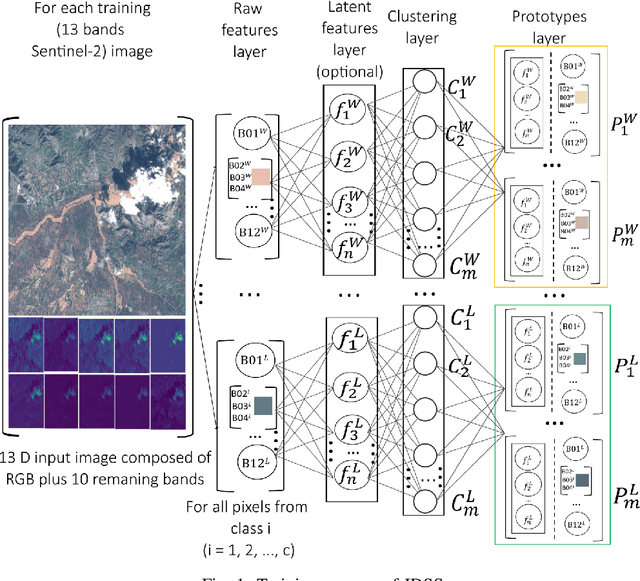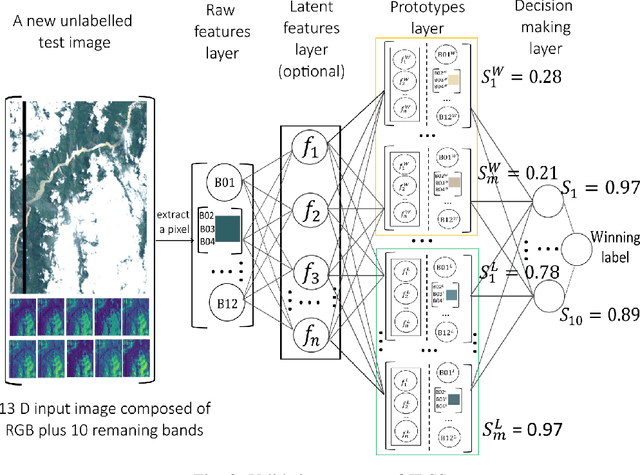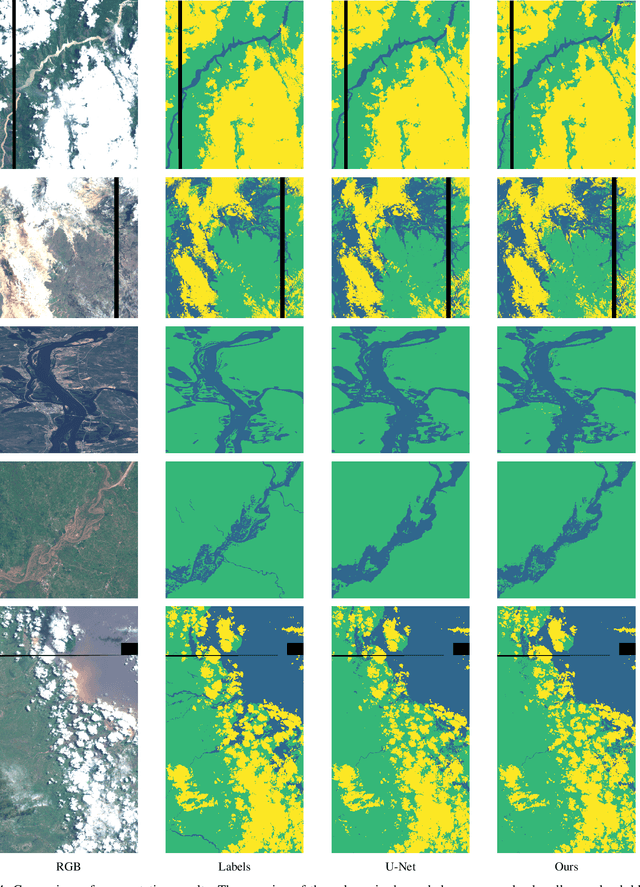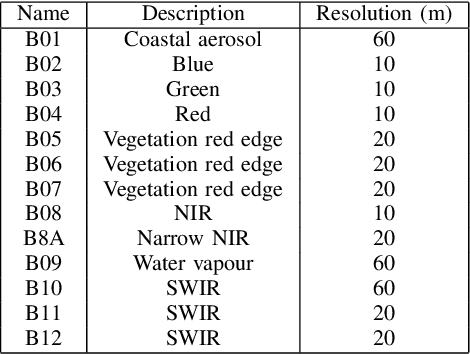Nicolas Longepe
Φ-lab Explore Office, ESRIN, European Space Agency
CAS: Confidence Assessments of classification algorithms for Semantic segmentation of EO data
Jun 26, 2024



Abstract:Confidence assessments of semantic segmentation algorithms in remote sensing are important. It is a desirable property of models to a priori know if they produce an incorrect output. Evaluations of the confidence assigned to the estimates of models for the task of classification in Earth Observation (EO) are crucial as they can be used to achieve improved semantic segmentation performance and prevent high error rates during inference and deployment. The model we develop, the Confidence Assessments of classification algorithms for Semantic segmentation (CAS) model, performs confidence evaluations at both the segment and pixel levels, and outputs both labels and confidence. The outcome of this work has important applications. The main application is the evaluation of EO Foundation Models on semantic segmentation downstream tasks, in particular land cover classification using satellite Copernicus Sentinel-2 data. The evaluation shows that the proposed model is effective and outperforms other alternative baseline models.
An Interpretable Deep Semantic Segmentation Method for Earth Observation
Oct 23, 2022



Abstract:Earth observation is fundamental for a range of human activities including flood response as it offers vital information to decision makers. Semantic segmentation plays a key role in mapping the raw hyper-spectral data coming from the satellites into a human understandable form assigning class labels to each pixel. In this paper, we introduce a prototype-based interpretable deep semantic segmentation (IDSS) method, which is highly accurate as well as interpretable. Its parameters are in orders of magnitude less than the number of parameters used by deep networks such as U-Net and are clearly interpretable by humans. The proposed here IDSS offers a transparent structure that allows users to inspect and audit the algorithm's decision. Results have demonstrated that IDSS could surpass other algorithms, including U-Net, in terms of IoU (Intersection over Union) total water and Recall total water. We used WorldFloods data set for our experiments and plan to use the semantic segmentation results combined with masks for permanent water to detect flood events.
Rain Rate Estimation with SAR using NEXRAD measurements with Convolutional Neural Networks
Jul 15, 2022



Abstract:Remote sensing of rainfall events is critical for both operational and scientific needs, including for example weather forecasting, extreme flood mitigation, water cycle monitoring, etc. Ground-based weather radars, such as NOAA's Next-Generation Radar (NEXRAD), provide reflectivity and precipitation measurements of rainfall events. However, the observation range of such radars is limited to a few hundred kilometers, prompting the exploration of other remote sensing methods, paricularly over the open ocean, that represents large areas not covered by land-based radars. For a number of decades, C-band SAR imagery such a such as Sentinel-1 imagery has been known to exhibit rainfall signatures over the sea surface. However, the development of SAR-derived rainfall products remains a challenge. Here we propose a deep learning approach to extract rainfall information from SAR imagery. We demonstrate that a convolutional neural network, such as U-Net, trained on a colocated and preprocessed Sentinel-1/NEXRAD dataset clearly outperforms state-of-the-art filtering schemes. Our results indicate high performance in segmenting precipitation regimes, delineated by thresholds at 1, 3, and 10 mm/h. Compared to current methods that rely on Koch filters to draw binary rainfall maps, these multi-threshold learning-based models can provide rainfall estimation for higher wind speeds and thus may be of great interest for data assimilation weather forecasting or for improving the qualification of SAR-derived wind field data.
 Add to Chrome
Add to Chrome Add to Firefox
Add to Firefox Add to Edge
Add to Edge